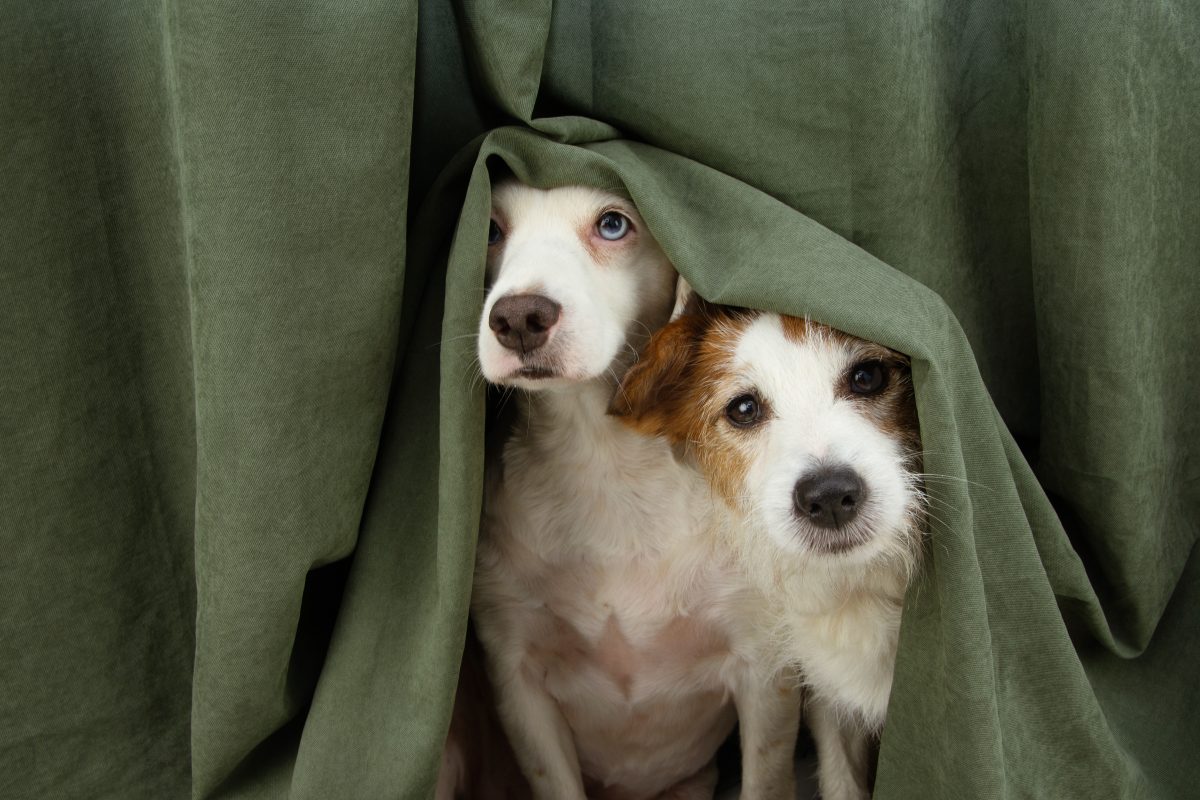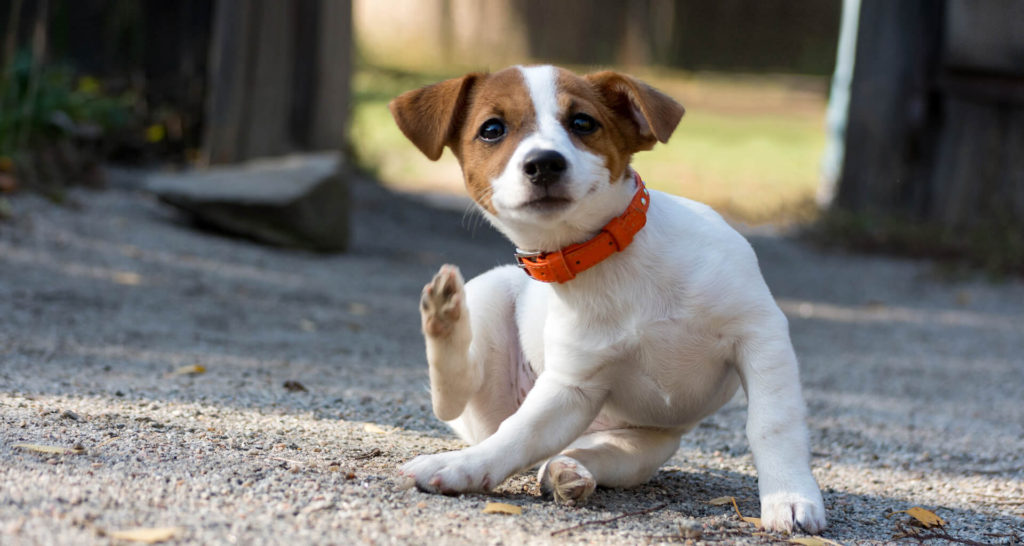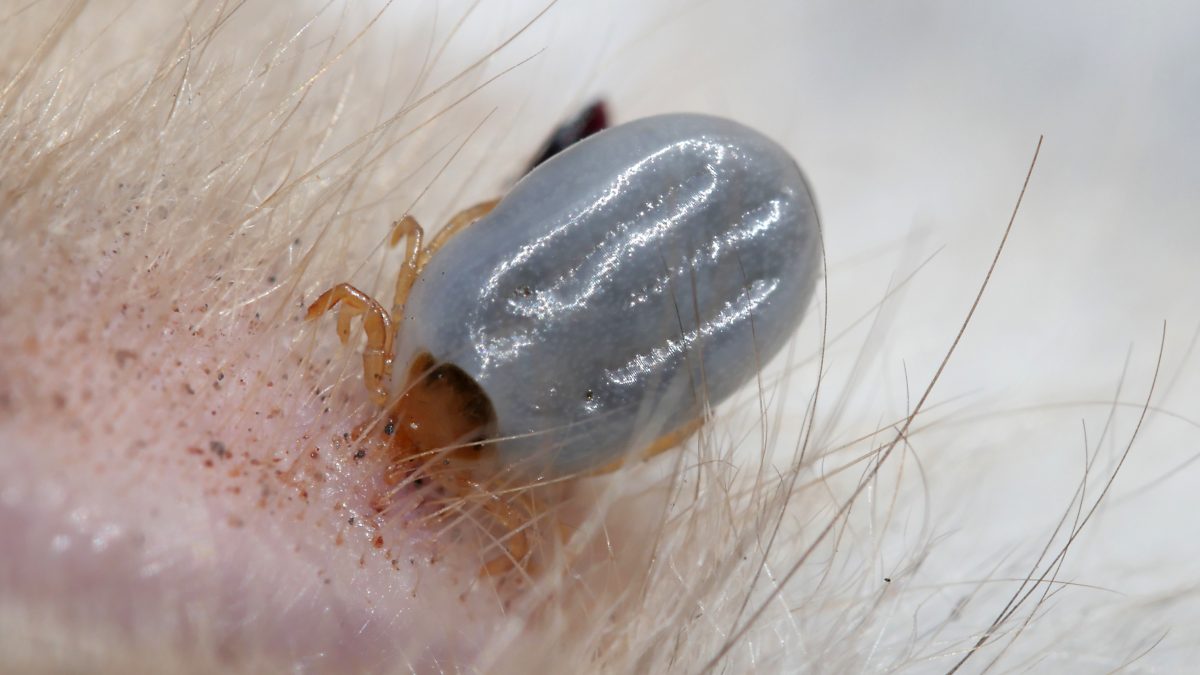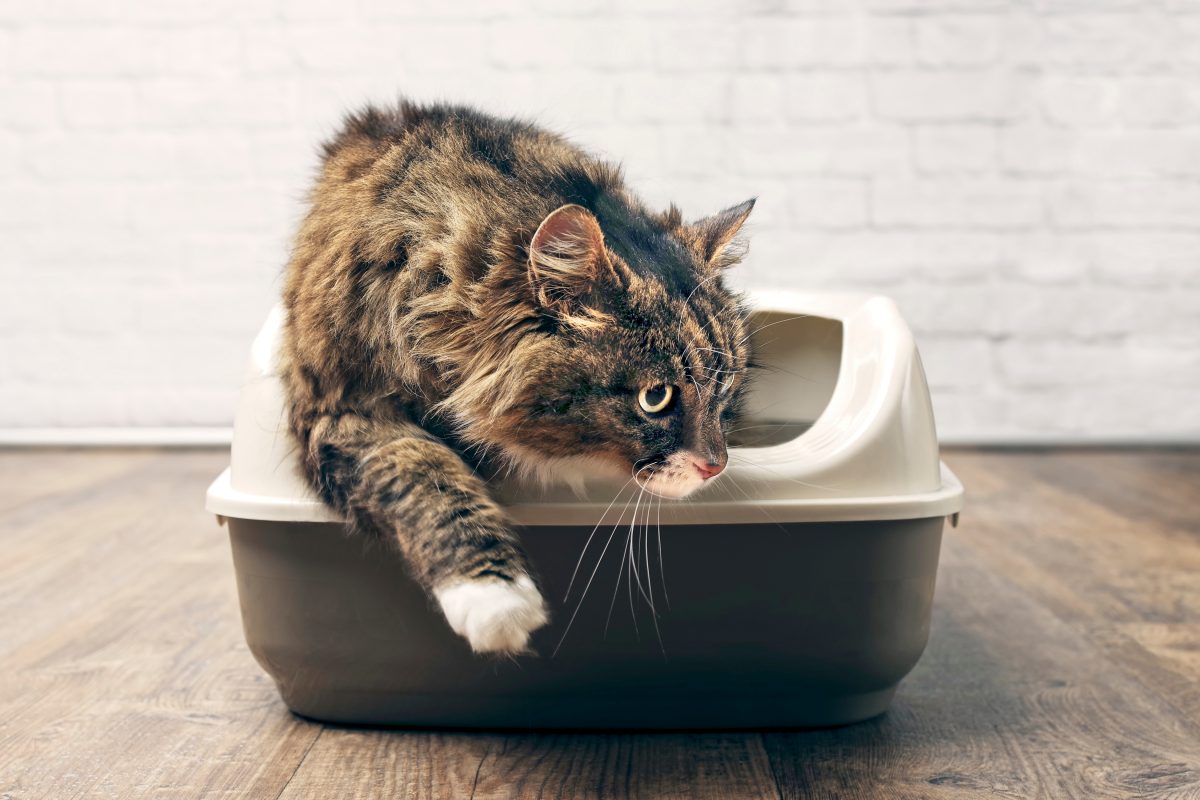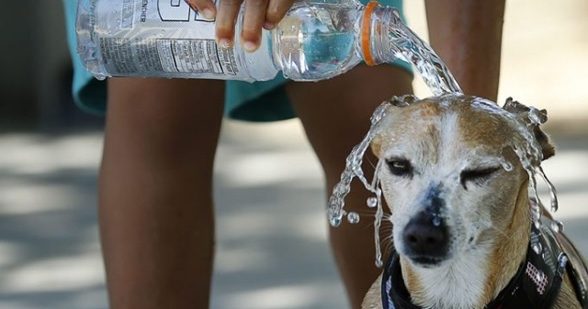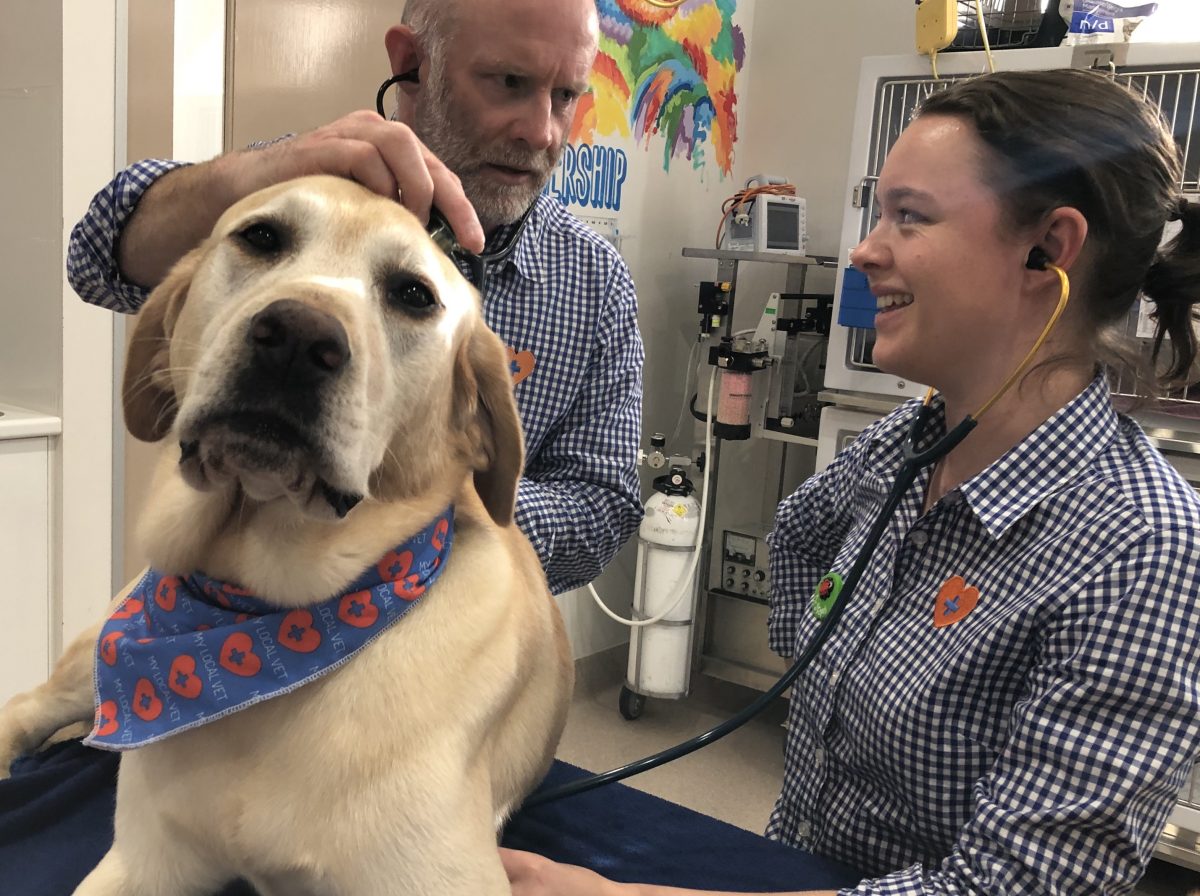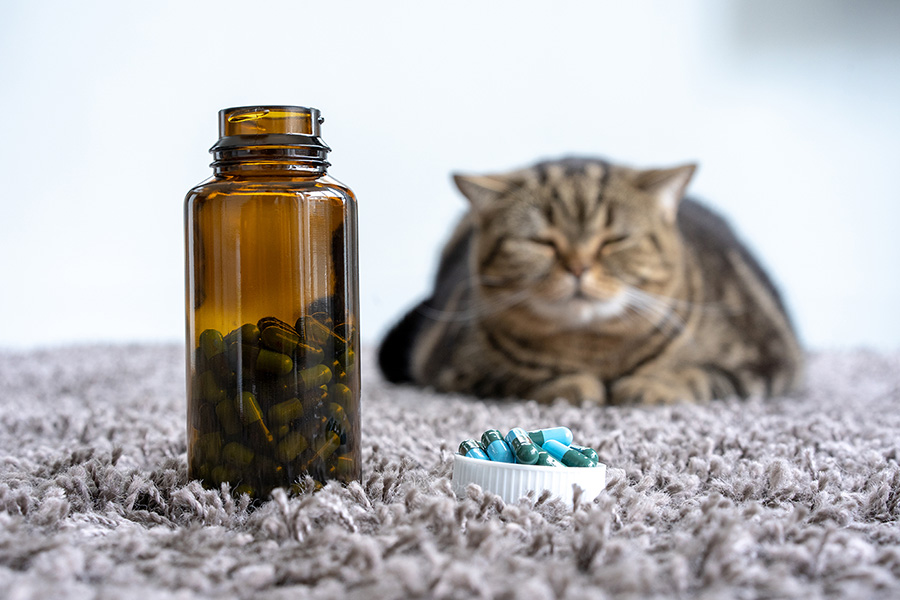Broadly speaking there 3 reasons for itchiness in dogs:
- Infection (bacterial or fungal)
- Parasites (fleas or mites)
- Allergy
Let’s explore each of these in turn.
Infection:
Bacterial and fungal skin infections can take various forms so simply showing you a picture of a dog with either of these skin conditions will not help you diagnose your dog correctly. Your veterinarian will perform confirmatory tests if they suspect a bacterial or fungal skin infection. Only then can you be confident that this is the cause of your dog’s itchiness. Most bacterial and fungal skin infections are easily treated and (depending on the location and severity of the disease) your vet may prescribe topical or oral medications or both.
Parasites:
The most common parasites causing skin disease in dogs are fleas and mites. To identify a flea infestation look carefully around your dog’s hind legs, particularly down the back of the legs and underneath – you will have to roll your dog on his/her back to do this properly. Make sure you part the fur. If you see small, dark granules in the fur collect some and place them on a piece of wet, white tissue paper – if the paper turns a brown/red colour this identifies the granules as flea faeces (digested blood). If flea faeces is present then so are fleas! If you have identified a flea infestation then the next step is to discuss the most appropriate strategy to eradicate the fleas. Unfortunately, it’s not just as simple as using a “spot on” liquid applied to your dog’s skin to kills all the fleas. The most appropriate course of action will depend on many factors such as how long your dog has had skin issues, the number and species of other animals in the household, if the dog/s are allowed indoors or only outdoors etc. Therefore, this warrants a conversation with your veterinarian.
Mites will be diagnosed by your veterinarian by performing a skin scrape or a trichogram – (pulling a small tuft of fur out and examining the hair follicles for mites). Both these tests require a veterinarian’s expertise and a microscope so there’s no real DIY option. Demodex (pictured below) is one of the most common mites seen in growing puppies, and is not contagious to other dogs or humans.
Demodex Mite
(Credit: School of Veterinary Science, University of Queensland)
Allergy:
Allergic skin disease is undoubtedly the most common cause of itchiness in dogs seen at My Local Vet. There are four categories:
FFlea allergy dermatitis (FAD)
Some dogs develop an allergy to the flea saliva and this means they may only require a single flea bite to cause severe itchiness and fur loss. The area of skin disease doesn’t necessarily correspond to where the fleas are on the dog’s body either so you can have fleas biting a dog under the hind legs yet the dog appears most itchy over the base of the tail. Some of these dogs develop a secondary bacterial infection as well.
Food Allergy
There are a variety of things that dogs can become allergic to in their food. The way to identify if your dog has a food allergy is to do a “food trial” using a specifically formulated dog food. The details of the food trial are best discussed with your vet because there are many things to consider before starting one. Firstly, your vet will take a thorough history in order to ascertain if food allergy is likely. Then he/she will examine your dog, taking into consideration if there is a secondary bacterial infection present or if there is evidence of some other skin disease. Food allergies in pets are often caused by various proteins which may be found in multiple foods (even if the label looks different) so changing your pets food without expert advice is unlikely to help, even if food allergy is the culprit. Many of the foods marketed for ‘sensitive skin’ contain some omegas which will benefit itchy skin but may not be appropriate for an actual food allergy.
Contact Allergy
some dogs will develop inflamed skin when they come in contact with an allergen in their environment. Contact allergy is often suspected when a dog develops skin disease exclusively on their paws, face and belly as these are the areas of the body most commonly in contact with their surrounds. If contact allergy is suspected by your veterinarian they will treat the allergic skin disease and discuss the typical plants that cause allergy in dogs as well as ways to prevent your dog from exposure to these allergens. 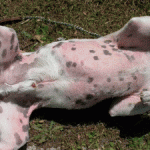 (Credit: Dermcare-Vet)
(Credit: Dermcare-Vet)
Atopy
Think of atopy as hay fever for dogs but instead of developing itchy eyes and sneezing, they become itchy and often develop ear infections. These ear infections are due to allergens in the environment (including the air) causing spontaneous inflammation of the ear canals which inevitably leads to overgrowth of bacteria and yeast in the ears! Every spring we see a wave of new atopy cases walk through our door due to the increased plant reproductive activity (pollens and grasses). There are dozens of other potential allergens in the environment including dust mite and cockroach faeces. It’s important to note that a diagnosis of atopy may involve special testing along with a careful history and examination to exclude other issues. If you suspect your dog to have seasonal skin allergy, consult your veterinarian to confirm this and to create a therapeutic plan. Unfortunately pets can’t avoid inhaling pollens as they can blow in the breeze for miles, so there’s no way to prevent exposure.
Conclusion
Having discussed the three broad causes of itchiness in dogs, it’s worth mentioning that there are often be multiple pathogens involved all at the same time. Therefore, killing fleas or using an antimicrobial shampoo might only be part of the answer. This is where your veterinarian can help! Your vet will have the knowledge and expertise to consider all potential causes, identify which ones are relevant and treat your dog accordingly. Of course there are other, less common causes of itchiness in dogs but the ones discussed here are those we see most commonly.




